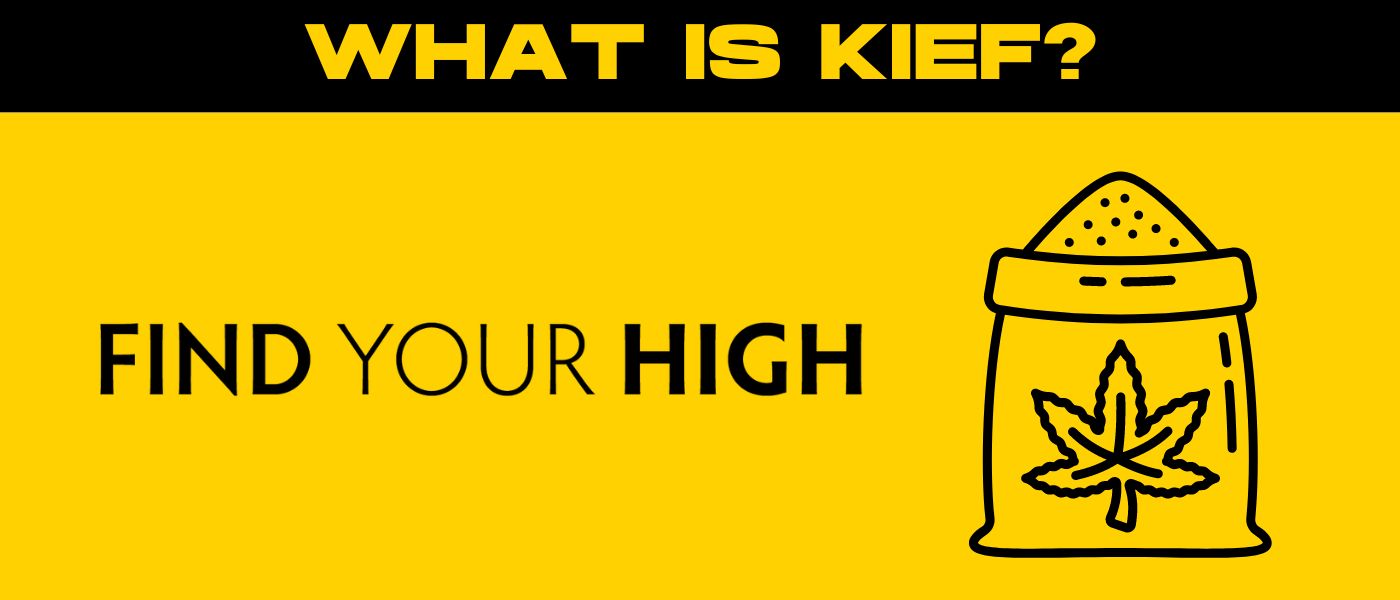Ever found yourself wondering, “What is kief?” Maybe you’ve heard the term but you’re not entirely clear exactly what it is. We’re here to help!
In the vibrant world of cannabis culture, kief holds a special place, both historically and in today’s community. Coming from the Arabic word “kayf,” meaning pleasure or intoxication, kief refers to the resinous trichomes of cannabis that can accumulate in containers or be separated from the plant material.
Its use in the cannabis community is significant because of its potent THC concentration, often surpassing that of the buds from the cannabis plant itself.
In this blog, we’ll take a closer look into the origins of kief, its practical uses, and its impact on the cannabis industry. So, stick around to learn more about how to use kief!
What is Kief?
In essence, kief is a collection of the sticky, crystalline structures found on the flowers, or buds, of the cannabis plant. These structures are called trichomes and not only do they give cannabis flowers their powdery appearance, but they are the powerhouses of the cannabis plant, producing and storing the cannabinoids, terpenes, and flavonoids that give each strain its unique properties and potency.
The process of extracting kief is simple and often happens unintentionally. When handling or grinding cannabis buds, the various kief crystals will naturally separate from the plant material.
However, a more deliberate extraction can be achieved using a three-chamber herb grinder, which will act as a kief catcher and store the kief in a separate compartment.
It’s essential to understand that kief and other cannabis concentrates, like hash or oil, are different in their composition and potency. While kief is pure trichomes, hash is made by compressing these trichomes under heat and pressure, and oils are extracted using solvents like butane or CO2.
Each of these concentrates has a different THC concentration, extraction method, and consumption method, giving cannabis enthusiasts a variety of experiences to choose from.
How Kief is Formed
Trichomes play a crucial role in the formation of kief. As mentioned before, these unique crystalline structures are small, hair-like outgrowths found on the cannabis plant. They serve as a protective shield, keeping predators at bay with their bitter taste and strong aroma.
But their real magic lies in the production and storage of cannabinoids, terpenes, and flavonoids—the special compounds that give the cannabis plant its remarkable properties. As these trichomes mature, they generously produce and store an abundance of these compounds, which can then be extracted as potent kief.
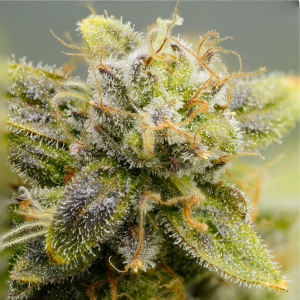
Cannabis Plant Anatomy Related to Kief
To fully comprehend kief formation, a basic understanding of cannabis plant anatomy is necessary. The cannabis plant is comprised of several parts, but when it comes to the benefits of kief itself, our focus is primarily on the flowers or buds.
These buds are densely covered with trichomes, specifically on the sugar leaves, which are the smaller leaves found within the flowers.
When the cannabis plant matures, the tip of each trichome forms a resinous gland head, which is essentially what we refer to as kief once it’s separated from the cannabis plant material.
Factors Influencing Kief Potency
The potency of kief can vary a lot depending on different factors.
First and foremost, the strain of the cannabis plant plays a big role. Different cannabis strains have their own mix of cannabinoids and terpenes, which directly affect how potent and impactful the kief is.
Secondly, the growing conditions, like light, temperature, and humidity, have a big impact on trichome development and, in turn, the quality and potency of the kief.
Lastly, the age of the cannabis plant when the trichomes are extracted can also affect the potency of the kief. Usually, cannabis trichomes are at their strongest when the plant is fully mature, which is the best time to extract kief.
Collecting Kief and Harvesting
Collecting kief from the cannabis plant can be done in a variety of ways, ranging from traditional methods to using specialized tools specifically designed for this purpose.
Traditional Methods
The most common method of pure kief collection is through the use of a grinder. Grinders with multiple chambers, often known as four-piece grinders, are typically equipped with a fine screen to separate the kief from the ground cannabis. The tiny trichomes pass through this screen and are collected in the bottom chamber, or kief catcher chamber, allowing for easy accumulation and storage.
Another traditional method is the use of a silk screen. The cannabis buds are gently rubbed over the screen, causing the trichomes to separate and fall through the mesh.
Specialized Tools for Kief Extraction
In addition to traditional methods, there are specialized tools available in the market designed specifically for kief collection. A kief box, often made of wood, contains a fine mesh screen for sifting the cannabis flowers and a glass bottom used to collect kief.
Another example of a specialized tool is a pollen press, which is used to compress kief into a compact, solid block for easier storage and use.
Best Practices for Maximizing Kief Yield
To obtain a maximum yield of kief, there are a few best practices to follow. First, always ensure your cannabis is completely dry before beginning the extraction process. Moisture can cause the trichomes to stick together, making them less likely to separate from the plant material.
Next, using a grinder with a kief catcher can help you collect kief over time, maximizing your yield with regular use.
Finally, consider freezing your cannabis bud before grinding. The cold temperature makes the trichomes brittle, causing them to break off more easily and increasing your overall kief yield. PS—Talking Trees x Hyperwolf Cold Cure flower, which is essentially freeze-dried cannabis flower, is an excellent source of kief.
Always remember, though, that the quality of your kief is heavily influenced by the quality of the cannabis you start with. Always use high-quality, well-cured cannabis flower for the best results.
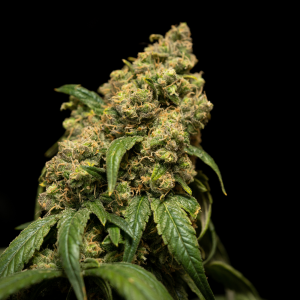
Uses of Kief
Because of its rich concentration of cannabinoids and terpenes, kief is an amazingly versatile cannabis byproduct! It has a wide range of uses, from smoking and vaping to infusing edibles and enhancing other cannabis products.
1. Smoking and Vaporizing
One of the most common ways to consume kief is through smoking or vaping.
When smoked, either alone or sprinkled on top of cannabis flower, kief provides an intensified psychoactive experience due to its high THC content.
Vaping kief is another popular method, which heats the kief without combusting it, leading to a cleaner and smoother inhale.
2. Infusing Edibles and Beverages
Kief can also be used to infuse a wide range of edibles and beverages. It can be added directly to the cooking process, or it can be used to make cannabutter or cannabis oil, which can then be used in recipes.
When used in this manner, the heat from cooking or baking activates the THC in the kief, resulting in an edible product with extremely potent psychoactive effects.
3. Enhancing Cannabis Products with Kief
Another use for kief is to enhance the potency of marijuana flower and other cannabis products. For example, kief can be compressed to create hash or you can add kief to pre-rolled joints or blunts for an extra kick. Simply sprinkle kief on a joint for higher potency!
It can also be mixed into cannabis-infused lotions or balms to increase their potency, but regardless of how it’s used, high-quality kief is a valuable resource for anyone wanting to maximize the power of the cannabis plant.
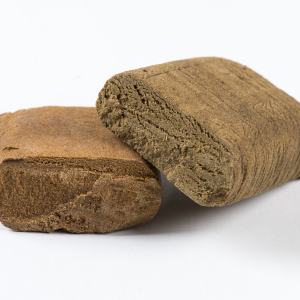
Potency and Cannabinoid Profile
The potency and cannabinoid profile of kief is a significant aspect to consider as it directly influences the overall cannabis experience.
This section dives deeper into the power of kief and the different cannabinoids found in it, which affect how it works and its potential for therapy.
THC and Other Cannabinoids in Kief
In the wide array of compounds found in cannabis, THC (Tetrahydrocannabinol) takes the crown as the most abundant cannabinoid in kief. After all, it’s the cannabinoid responsible for the well-known mind-altering effects of cannabis.
THC interacts with the cannabinoid receptors in the brain, leading to a range of effects from euphoria to anxiety. But kief doesn’t just contain THC; it also packs other cannabinoids like CBD (Cannabidiol), CBN (Cannabinol), and more. Each of these cannabinoids has its own distinct qualities and health benefits, adding to the overall experience of consuming high-quality kief.
Comparisons to Other Cannabis Products
When compared to other cannabis-derived products, kief stands out for its high potency. For instance, the average cannabis flower contains about 10-25% THC, whereas kief can have a concentration as high as 50-60% or more.
This makes kief a more cost-effective and efficient choice for those seeking stronger effects. However, it’s important to note that because of this high potency, kief should be used with caution, especially by those new to cannabis.
Understanding the Effects of Consuming Kief
The effects of consuming kief can be intense, given its high concentration of cannabinoids. Cannabis consumers can experience a sudden rush of euphoria, creativity, and a sense of relaxation.
However, depending on the cannabinoid profile, the effects can also include increased alertness or sedative qualities. It’s crucial to keep in mind that everyone’s body chemistry is unique, and reactions can vary from person to person.
As always, if you’re new to kief or cannabis in general, start with small amounts and gradually increase as your tolerance builds.
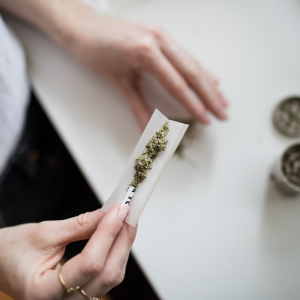
Storing and Preserving Kief
Proper storage and preservation of kief are just as crucial as the extraction process. To maintain its potency and quality, it’s best to keep your kief in a cool, dark place. Heat and light can degrade the cannabinoids and terpenes in your kief, making it less potent. Also, make sure to store your kief in an airtight container like a glass jar to prevent moisture and mold.
To prevent degradation and loss of potency, avoid handling the kief too much, as the heat and oils from your fingers can also degrade the cannabinoids. Additionally, it’s best to store your kief separately from your other cannabis products, as its fine texture can easily mix and get lost.
Finally, it’s beneficial to avoid storing kief for too long, as even under optimal conditions, the potency can diminish over time. Consuming your kief within a few months of extraction is typically the best way to ensure you’re getting the most out of it.
Summary
In our quest to understand ‘what is kief’, we’ve explored its extraction methods, uses, potency, cannabinoid profile, and how to store it properly.
Kief, with its high concentration of THC and other cannabinoids, is a potent and versatile byproduct of the marijuana plant. It can be smoked, vaped, used to infuse edibles and beverages, or even enhance other cannabis products.
However, its high potency requires responsible use, emphasizing cautious consumption, especially for those new to cannabis.
As we move forward, the role of kief in cannabis culture and industry continues to evolve, expanding its usage and importance in a variety of different cannabis strains and products. Ultimately, kief is a powerful addition to your cannabis experience and is highly recommended if your tolerance permits.
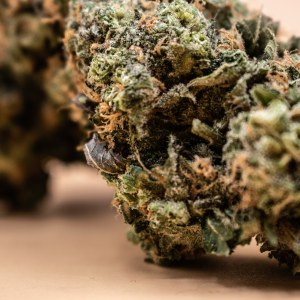
Frequently Asked Questions
1. Does kief get you very high?
Yes, kief can get you very high. This is due to its high concentration of THC, the psychoactive compound found in cannabis. Kief typically contains 50-60% THC, much higher than the average 10-25% found in cannabis flowers. Consequently, the effects can be intense and longer-lasting.
2. What is the point of kief?
The point of smoking kief is to offer a more potent cannabis experience. It can be used in various ways, including smoking, vaping, enhancing other cannabis products, or infusing into edibles and beverages. Because of its high THC content, it provides a stronger and more intense effect than using cannabis alone.

 Rewards
Rewards




